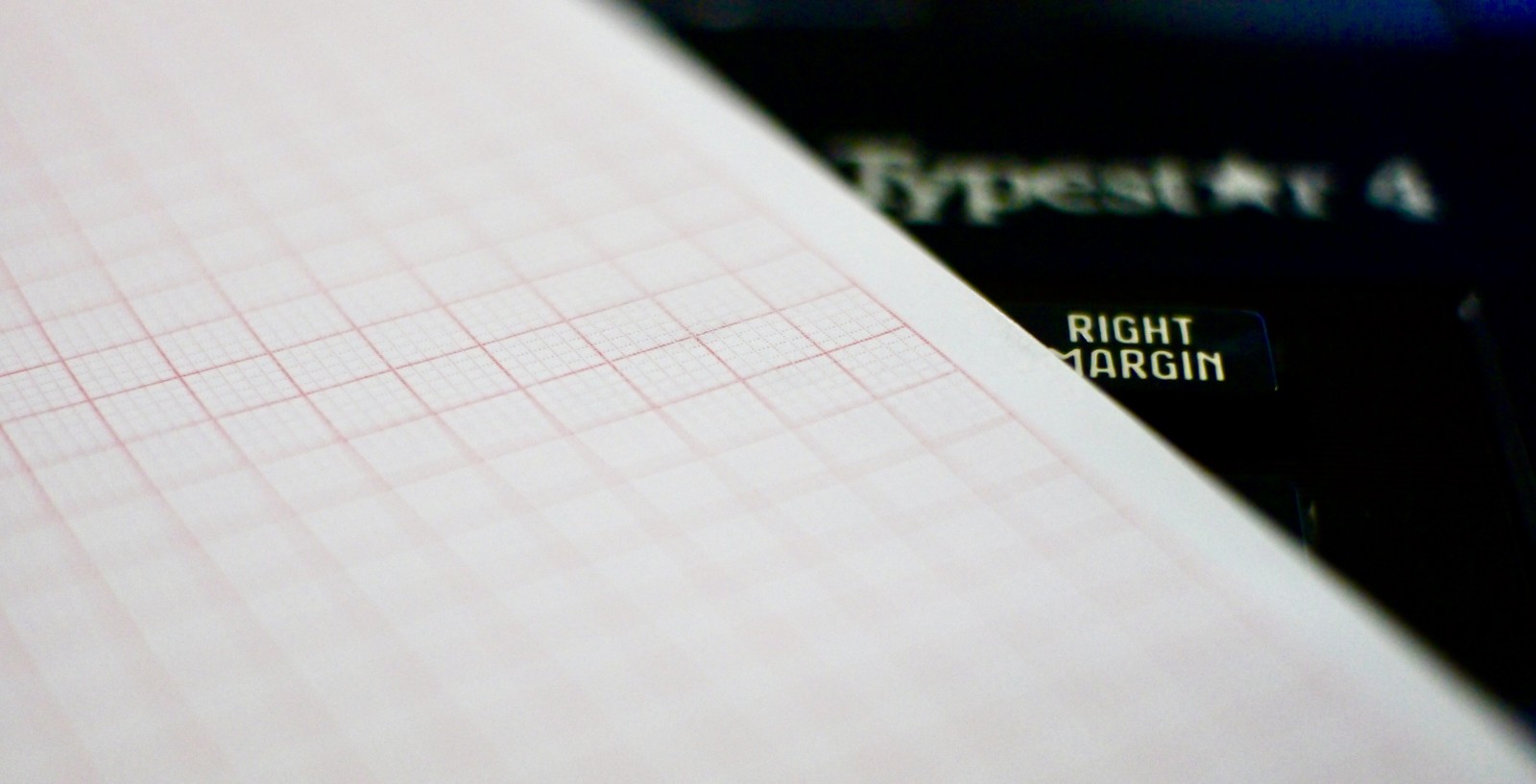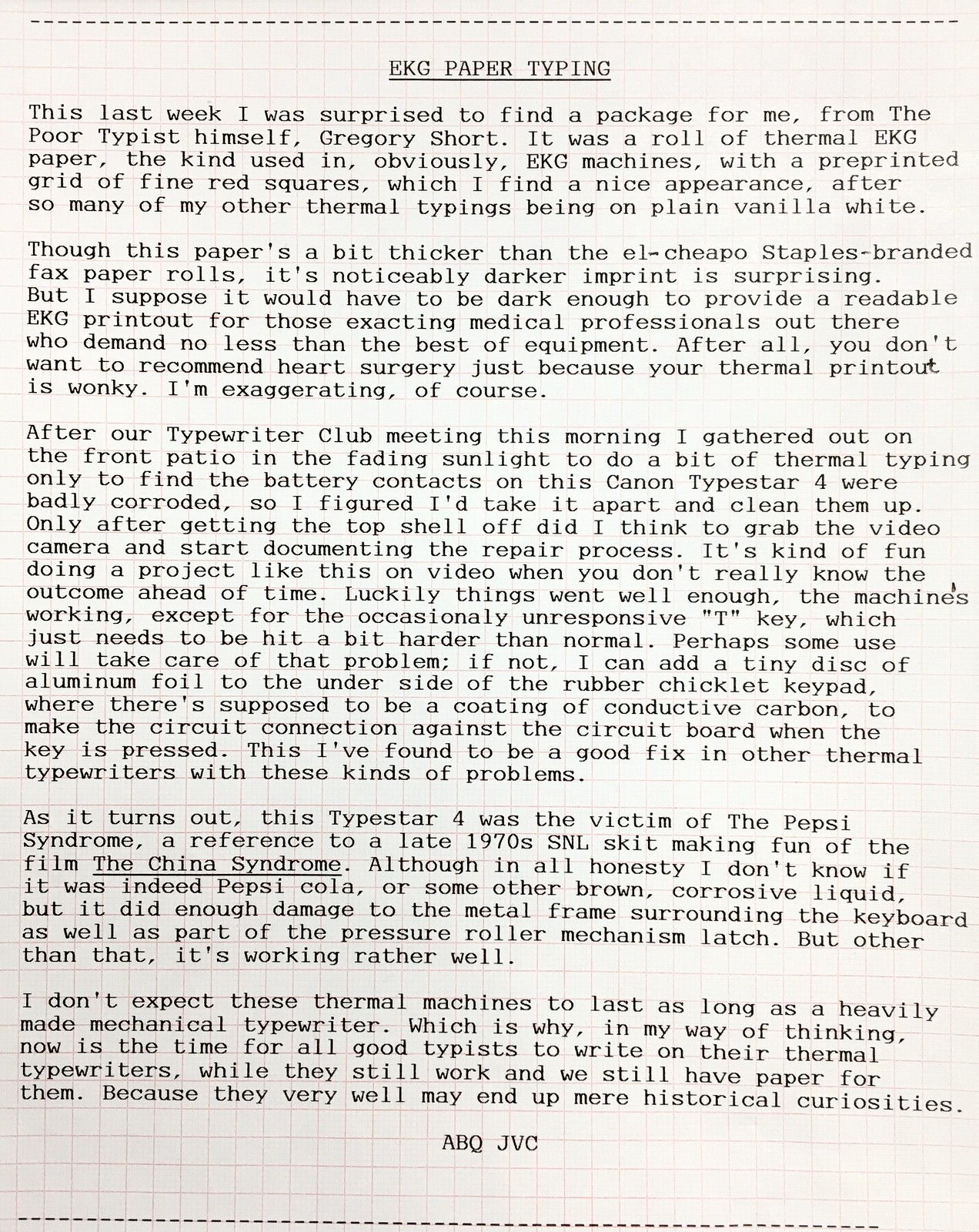Bitten by the Bug -- Again!


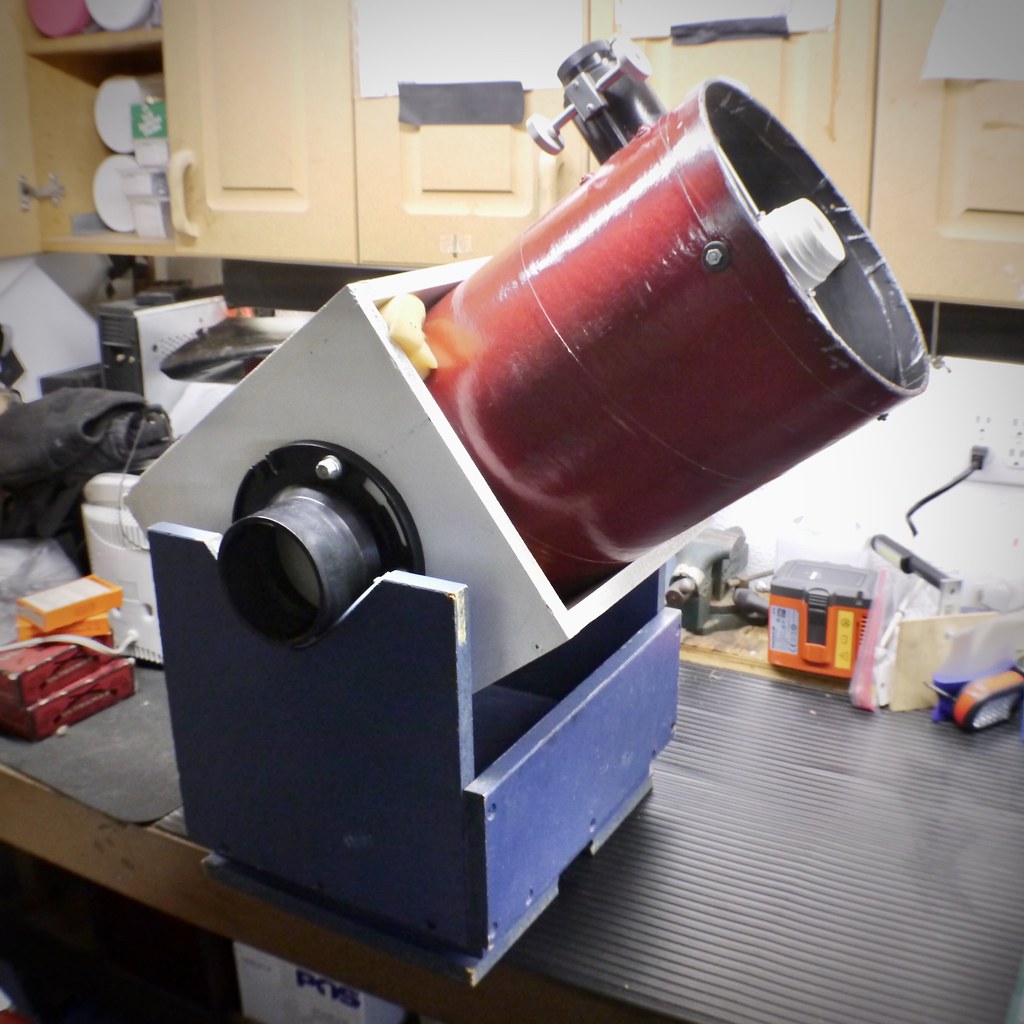
My first serious telescope, a Sky Research 8" F/2.9 Dobsonian, circa 1981

In the early 1980s I used the rich-field Sky Research dob for a number of years, but was keenly aware of its shortcomings. While it sported an unrivaled F2.9 aperture, ideal for dim, extended objects requiring more light grasp than magnification, it was a poor planetary scope, due to its short focal length and large secondary mirror obstruction. Still, I kept it in the camper shell of my Toyota truck, to have handy whenever the mood struck. And I enjoyed some spectacular views of nebulae, in the mountains of northern New Mexico at night, where Orion's nebula shone like a Hubble picture.
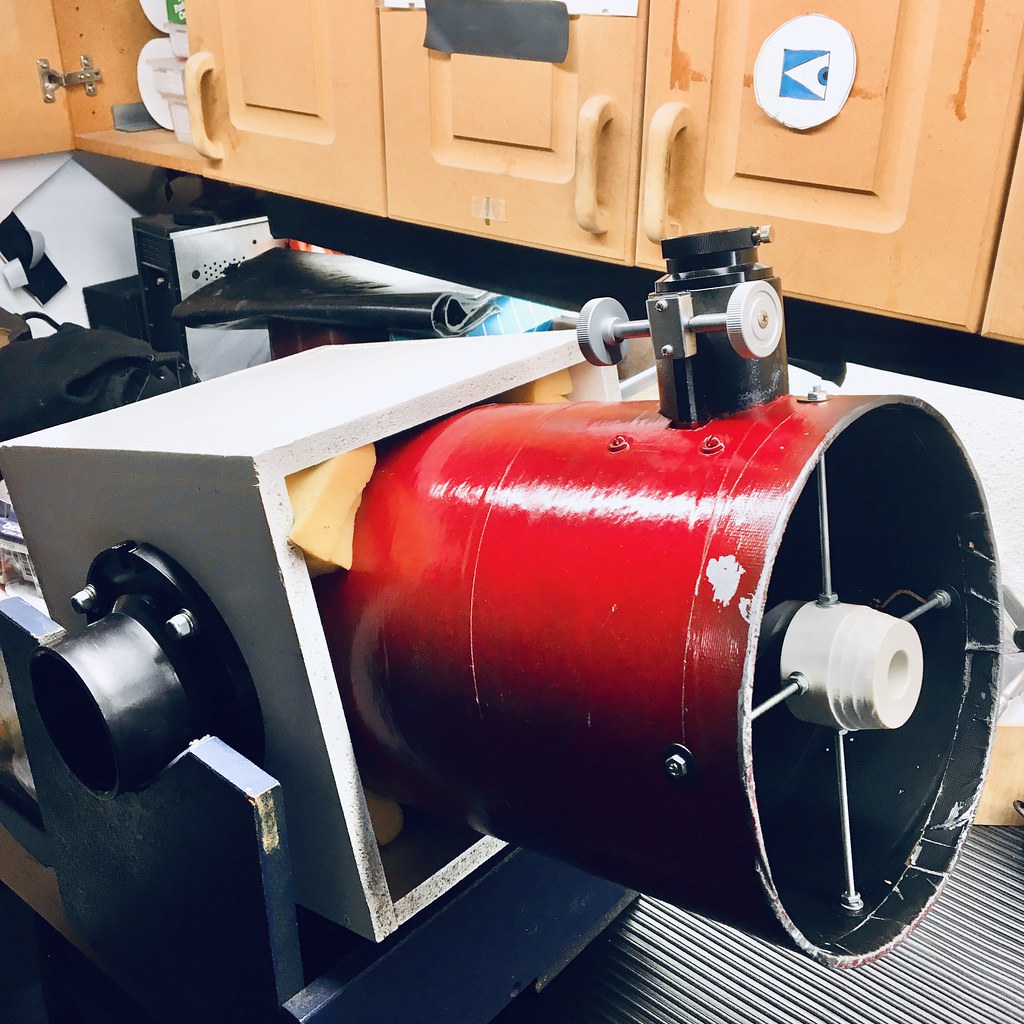
And then one morning, on the way to work at the TV Repair Shop, I got in a traffic accident, and the scope was thrown around the back of the camper shell, which fractured the composite body tube around the eyepiece focuser mount. I put the scope into storage for a number of years, until I could decide what to do with it. Years later, I replaced the 9.25 inch diameter body tube with a 10 inch diameter construction type concrete form tube, which required replacing the glass aperture plate (the original scope had the secondary mirror mounted to a clear glass aperture plate up front, with no mounting spider like an open-tube Newtonian), with a makeshift threaded rod and plumbing cap secondary mirror mount and spider. In the process I painted the new body tube red, with the rocker box now white.

I was still looking for a stargazing solution, however. For a while I used my Dad's Edmund Scientific 4.25" newtonian, which he'd bought in the 1950s. I remember one summer night at Altura Park viewing Mars at opposition, and sketching surface detail in that scope. It certainly performed above its weight limit!

One thing led to another, and eventually I was left with the red/white/blue shorty dobsonian, and a beaten up old Tasco reflector, the kind once sold in department stores. Not the best instrument for a serious amateur. It's this little red scope that I've been having fun with recently. It's easy to take down and store in my garage, and gives an adequate view of brighter objects from the city. But I'm keenly aware of its limitations.

This isn't the first time I've been down this road, being bitten by the astronomy bug and wanting a better viewing instrument. Within the last decade I started using a 7x50 binocular, mounted to my Bogen camera tripod, and enjoyed the views, and especially the ease of setup, tear down and storage. But I wanted an instrument with higher magnification and light grasp, so eventually got these Zhumell 25x100s. That's 25x magnification and 100mm (about 4") aperture. Bigger than the little red reflector's 3" mirror, almost as big as my Dad's old Edmund Scientific reflector, though a much shorter focal length, and fixed magnification, as the eyepieces aren't removable.
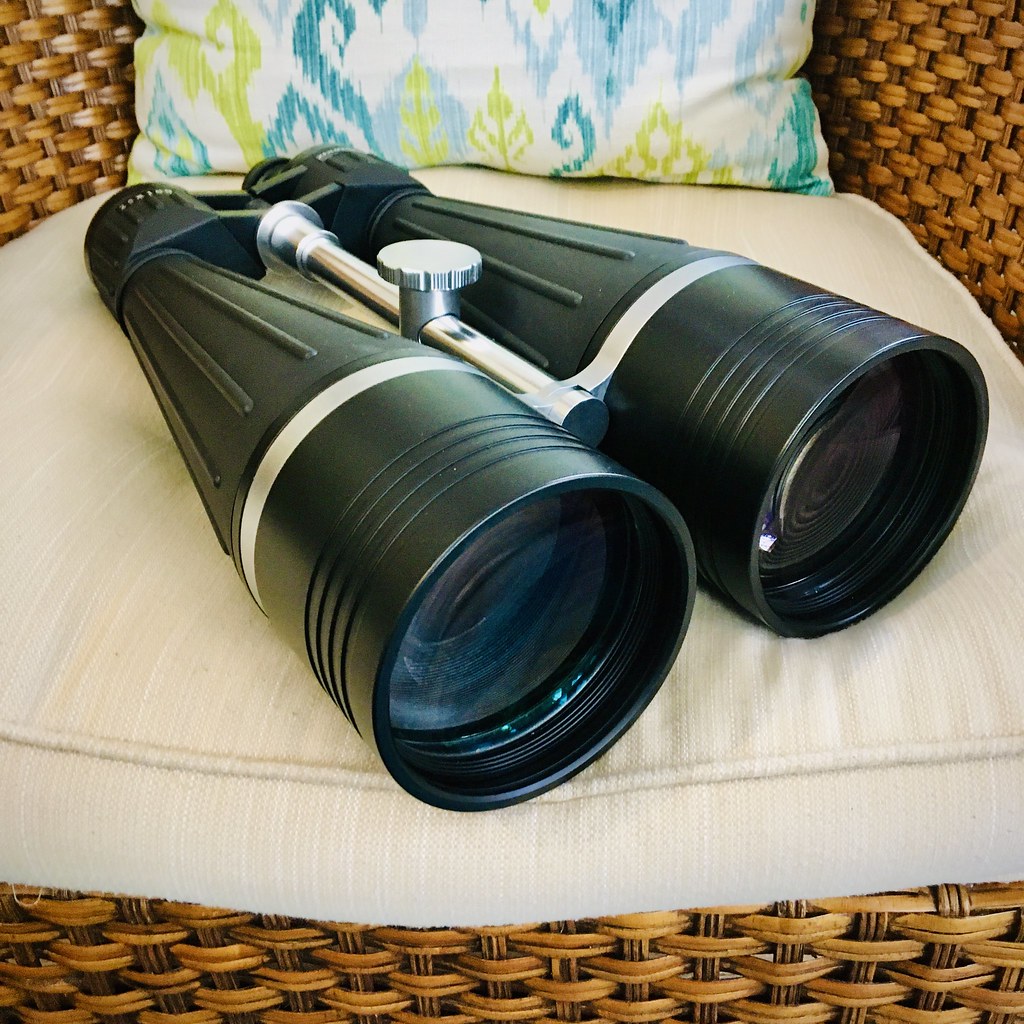
Forget handholding these babies. It's not even a suggestion to have a tripod, but mandatory. They weigh north of 15 pounds. But I've had some fun viewing with them, using both eyes, first using my Bogen camera tripod (which is almost too flimsy for them), and later with this cobbled together-frame that positions the binos at eye level, reclined in a zero-gravity lawn chair. Perfect viewing comfort.
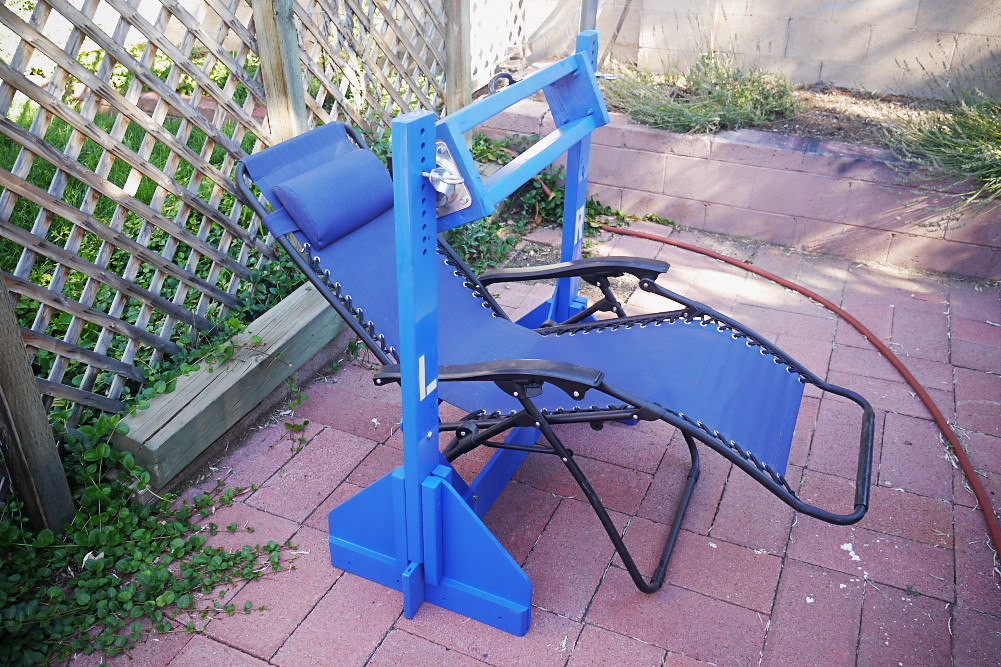

But alas, this frame is too large to store with easy access in my garage, so has been relegated under a pile of clutter, along with the folding chair, in my storage shed. But I have been busy sketching ideas of different binocular mounts.

First is my version of a parallelogram mount. This is an articulating arm, mounted to a tripod, that attaches the binocular to an L-bracket on one side and is counter-weighted on the other. This kind of mount permits the binocular arm to be moved up, down and sideways without changing the aiming point of the instrument. Set a reclining chair next to the tripod and you're all set. These are available for purchase, but this was my sketch of a homemade version.

Next are two more sketches. The one on the left is an alt-azimuth mount that attaches to a tripod and has those low-friction bearings like on a Dobsonian reflector scope. The problem with this idea is the eyepieces don't have 90-degree prisms, so pointing the instrument at the zenith means getting in an awkward position underneath. And because the tripod's directly below the instrument, there's no room for a reclining chair.
The sketch on the right is for a counter-weighted frame that positions the scope in front of the user, reclined in a chair, with the up/down pivot of the frame being located adjacent to their ears, meaning as the viewer tilts their head up and down the binocular can follow with the eyepieces right in front of them. I didn't show the rest of the idea, which is a reclining chair mounted to a rotating platform. While it would represent the ultimate in binocular viewing in comfort, I'm not convinced of its easy of storage or portability. Oh well, at least the idea is documented on paper.
Since I did drag the short-tube Dobsonian out of the storage shed and cleaned it up (except the mirror is still needing cleaned), perhaps I'll put it through its paces during these next few weeks, and see how I get on with it, before deciding on buying either a parallelogram mount for the big binoculars, or a larger, longer Dobsonian-style Newtonian. And if I do decide to make another gear acquisition, it's incumbent upon me to give my older gear away to someone who'd appreciate it, perhaps starting their own journey into star gazing.
These are the problems of a part-time sky watcher, who has bigger dreams than his pocket book or available room can accomodate. But I suppose there are worse problems.
Stay well, and keep looking up.
Labels: star gazing amateur astronomy
